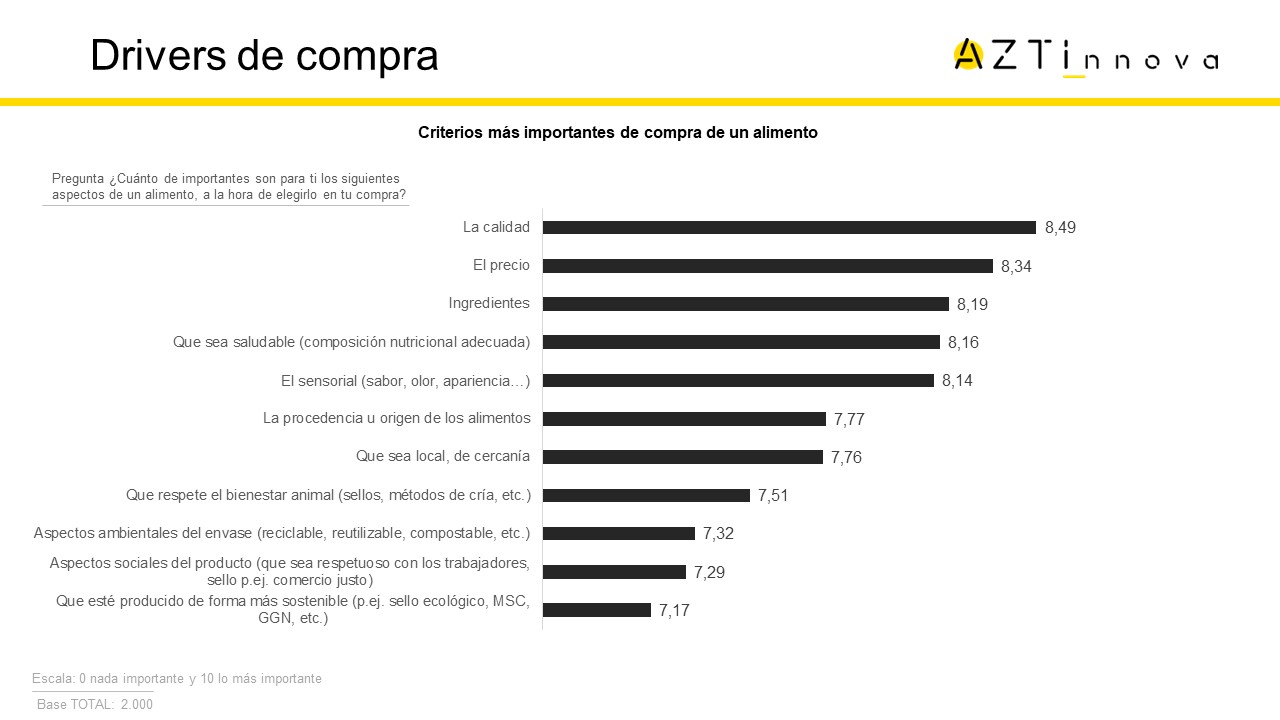In the complex world of retailing, ‘purchase drivers’ are the key elements that drive our food purchasing decisions. These varied and often underlying factors play a fundamental role in our daily choices, both in physical outlets such as grocery shops and supermarkets, and on online shopping platforms.
From convenience to health, sustainability to value for money, these drivers influence how we select, buy and consume the food that reaches our tables. In this article, we will explore in depth the main drivers of food purchasing, according to a survey conducted on a sample of 2,000 people as part of the Consumer Observatory project run by EIT Food.
Main drivers of food purchases among European consumers
According to the results of the study, on a scale of 0 to 10, (where 0 is not at all important and 10 is the most important), quality is the most valued aspect (with an average of 8.49), followed closely (with 8.34) by price. We can therefore see that quality and price are the most important aspects at the time of purchase.
The third aspect on the podium (with a score of 8.19) is ingredients. European consumers are becoming more and more informed and, in their concern for food, they are paying more and more attention to the list of ingredients in the products that make up their shopping basket.
The next two drivers have very little difference between them: that the products are healthy (that they have an adequate nutritional composition) and the sensory aspect (taste, smell, appearance) score 8.16 and 8.14 respectively.
Rounding out the top 10 are the provenance or origin of the food (7.77), whether the food is local (7.6), whether it respects animal welfare (7.51), the environmental aspects of the packaging, i.e. whether it is recyclable, reusable, compostable…. (7.32), and the sociable aspects of the product, e.g. whether it is worker-friendly (7.29).

